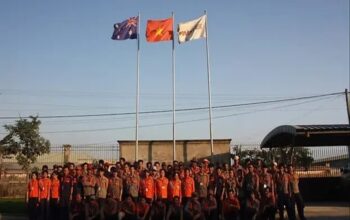Highly Detailed Images at Fast-Changing Requirements
With maximum versatility, the ARAMIS Adjustable 24M sensor combines cutting-edge technology. For point-based and full-field measurements, the two 24-megapixel cameras record even the minute details of 3D displacements and surface strain. The sensor provides accurate findings for a wide range of inspection activities and satisfies complex requirements in research and development thanks to its one-of-a-kind combination of high local resolution and picture recording rate.
Next-Generation Testing Sensor
The robust hardware of the ZEISS ARAMIS Adjustable 24M sensor is up to the task and offers flexibility for any measuring task: the fiber-optic components enable high data transmission rates, the backside illumination ensures excellent light sensitivity and predefined frame modes offer smart options for capturing swift movements.
Effective
The sensor’s great spatial resolution makes it possible to collect more 3D coordinates per measuring area. This enables you to measure large objects (greater than 500 mm) at closer ranges and gives you more information about filigree areas or structures.
Versatile
At full camera resolution, the ZEISS ARAMIS Adjustable 24M shoots at a frame rate of 100 frames per second (fps). However, four additional frame modes allow for an increase to 360 frames per second. The system can be modified to do a variety of measuring jobs when combined with the modular design.
Reliable
Fast and dependable processing of measurement data is made possible by the sensor’s lightweight and flexible fiber-optic cables as well as its industrial network components. Thus, the system is immune to electromagnetic interference and capable of high data transmission rates.
Technical Data
Camera resolution: 5312 × 4448 pixels
Frame rate (fps): 100 fps @ full resolution
350 fps @ binning (2656 × 2224 pixels)
185 fps @ 5312 × 2240 pixels
270 fps @ 5312 × 1472 pixel
360 fps @ 1920 × 1088 pixels
Measuring area (mm): 20 × 17 up to 5000 × 4500
Precise and Versatile for Research and Development
The unique combination of high spatial resolution, fast image acquisition rate, and modular design offers maximum flexibility to handle a wide range of measuring tasks. This is crucial when the requirements for a sensor change rapidly in research and development.
Civil engineering
In the field of material characterization, the sensor reliably determines material parameters and registers even the smallest crack peaks that occur prior to material failure. During crack development and crack opening analysis of larger components with low strain, the high spatial resolution enables early analysis of structural changes in detail.
Electronics
Compared to sensors with lower resolution, more information is generated on the same measuring area, allowing displacements or strains to be calculated more accurately. Therefore, even small samples and components (2–50 mm) can be measured with the highest level of detail to analyze the behavior of electronic components under thermal load.
Automotive
In the context of fatigue testing of larger components (> 500 mm) with low strain, the ZEISS ARAMIS Adjustable 24M allows more accurate determination of deformations at maximum force and a temporally detailed record of displacements.
Click on the following link Metrologically Speaking to read more such blogs about the Metrology Industry.









